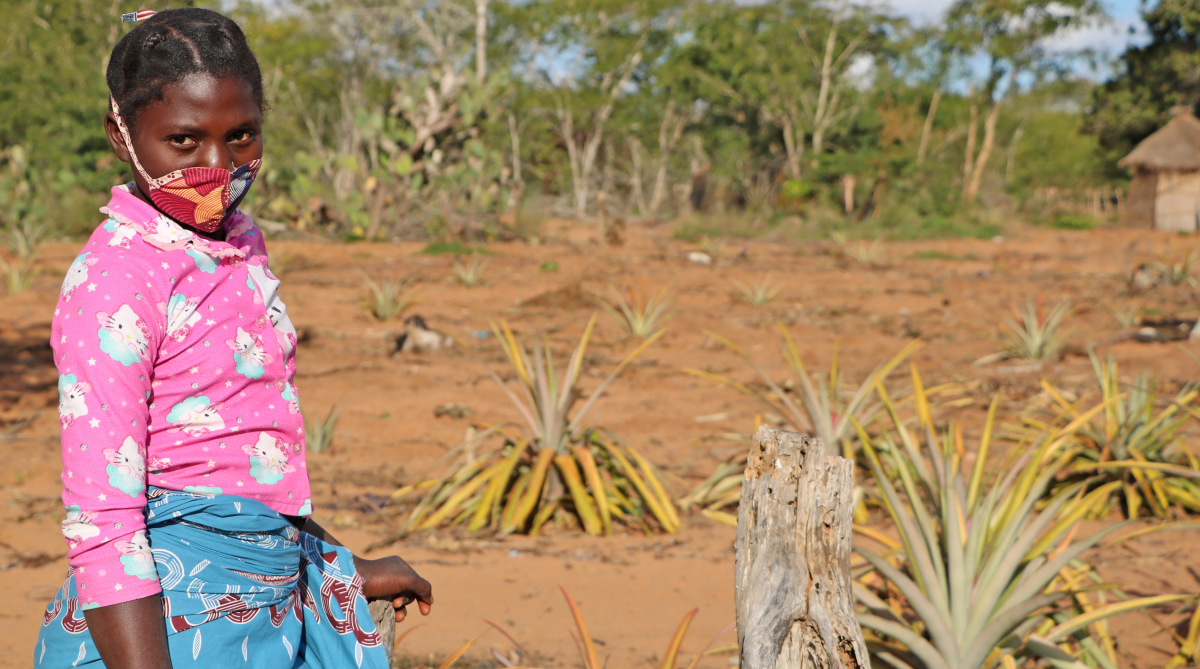Support strong Canadian climate journalism for 2025
“When the schools closed, I had to do something to help my mother provide food for us. I started washing our neighbour’s clothes to get some food to take home for dinner,” Castarina, a 12-year-old girl from Mozambique, shared with Plan International Canada.
When the pandemic closed schools, it also cut off access to food for children like Castarina who rely on school feeding programs for daily meals.
Her story is heartbreaking. It’s also not unique.
Hunger affects millions of children all over the world, and COVID-19 has exacerbated what was already a crisis in many communities. As of February, the World Food Program estimates 950 million people worldwide are suffering from hunger. Numbers that large can be hard to visualize, but think of it this way — millions of individuals like Castarina do not know where their next meal will come from.
As a physician and a leader at a children’s rights organization, I’m concerned about how food crises affect children, particularly girls.
While all community members are impacted by lack of food, children are the hardest-hit group. Their health deteriorates fast, from mild to severe malnutrition, when children can die. These children are highly susceptible to common infections such as diarrhea and respiratory infection that can be the cause of death. Where food shortage is chronic and lasts for months, children can become stunted even if they survive.
Gender inequality also influences how families provide food to their girls and boys, and the effects on adolescent girls like Castarina are often unacknowledged. When food is scarce, girls often eat last and least. Families feeling the desperation of growing hunger may resort to negative coping mechanisms, heightening girls’ risks of removal from school, early and forced marriage, and sexual exploitation. During a crisis, girls’ lives are further restricted and their agency over decisions that impact them is further limited.
I’m especially worried about very young children — those five years old and younger. If they survive the food crises, their bodies are rapidly changing and food is vital to ensure their growth isn’t stunted and their brains develop properly. Good nutrition at this early stage in their lives has a significant impact on their educational attainment, health and economic outcomes in the future.
The economic fallout of the pandemic has restricted income of already vulnerable communities. For many people around the world right now, it’s not just the threat of contracting COVID-19 that most concerns them — it’s whether their families, especially their young children, can survive another day without food.
What can we do about this dire situation? How do we prioritize one area of suffering over another when a crisis like COVID-19 affects so many people in so many different ways? The short answer is this: We must address each issue head-on, prioritizing those that are most life-threatening and ensuring that gender equality underpins all actions.
For millions of people, particularly women and children, the risk of starving to death is extreme, therefore this crisis must move toward the top of the list.
Global leaders and donors must urgently ramp up investments in food security measures worldwide. Adequate, timely and flexible funding, along with strengthened local partnerships and support to government systems, is needed. There must be a drastic scale-up of critical humanitarian, livelihoods, food and nutrition assistance, and in all cases, women’s rights and youth-led organizations should be central in the response.
The development and well-being of children must be considered during a hunger crisis. Funding should support gender responsive interventions that protect children, prevent and address gender-based violence and maintain children’s education during emergencies.
Cash transfers and vouchers should be offered to families who are struggling. Children must also continue to benefit from school feeding programs in the form of take-home food rations, which maintain access to nutritious meals even when schools close. For many children, this food is a lifeline and the only nutritious meal they receive.
Food insecurity can sometimes be a slow burn — so it must also be addressed before it becomes an emergency. Investments must contribute to long-term, gender-responsive resilience strategies, such as growing food locally in a sustainable manner, livelihoods support and investments in shock-responsive, flexible social-protection systems. These actions, coupled with long-term development funding that includes the ability to rapidly respond if a crisis hits, are imperative.
Governments, humanitarian actors, the private sector and philanthropists worldwide can help turn this crisis around. Individual Canadians can make a difference, too — no action is too small. If you have the financial capacity to give, consider donating to your local food bank, while at the same time contributing to organizations providing food assistance for people experiencing hunger worldwide.
The challenge ahead is large, but not insurmountable. We cannot let the dreams and aspirations of children like Castarina slip away.
Dr. Tanjina Mirza is the chief programs officer for Plan International Canada.






Comments